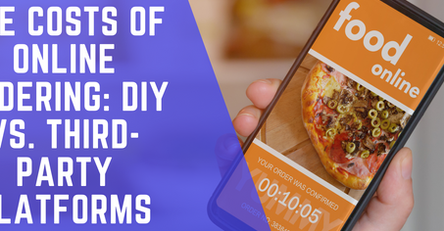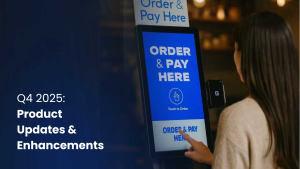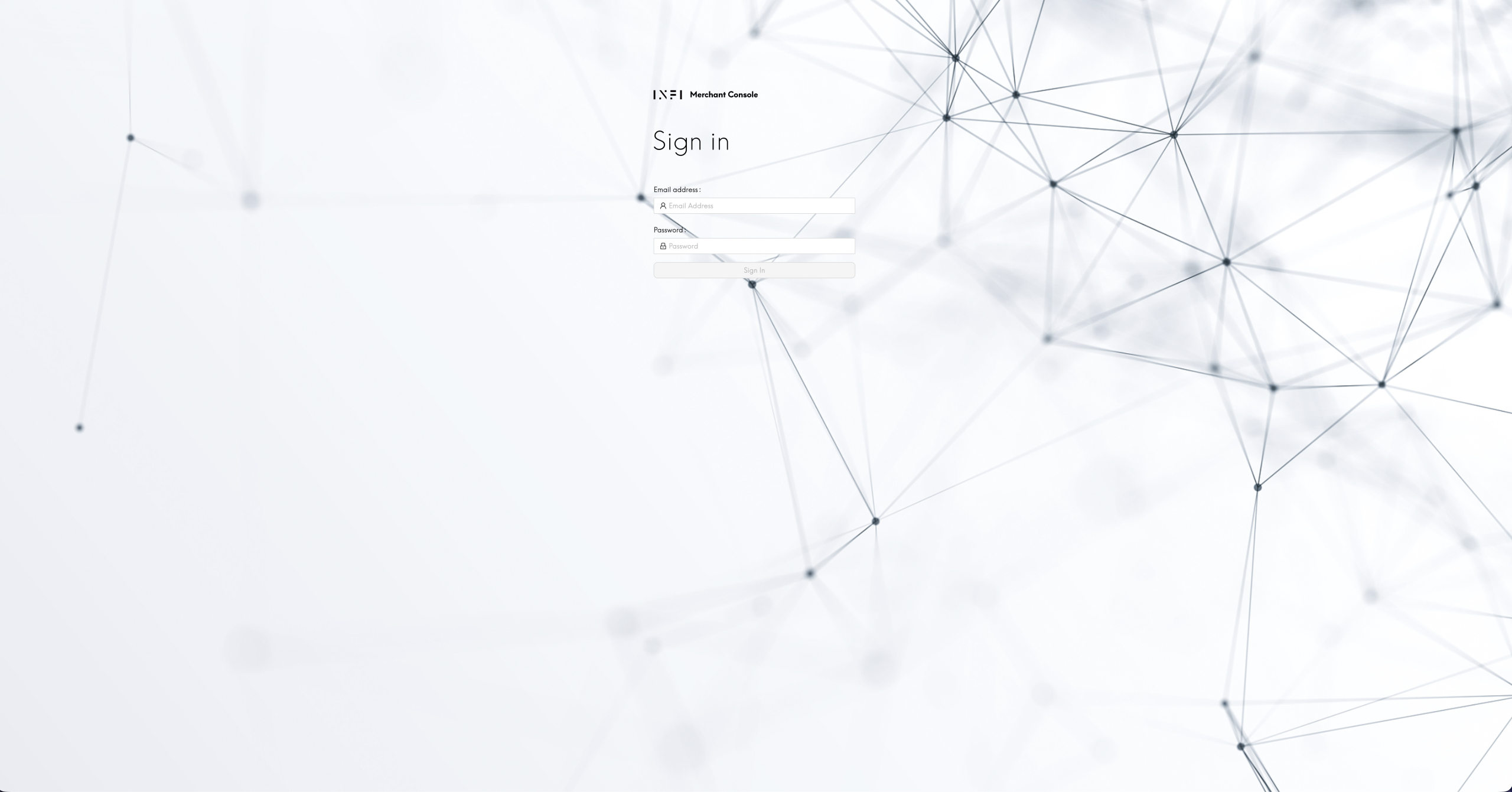POS or KDS: Which One Is Right for Your Business?
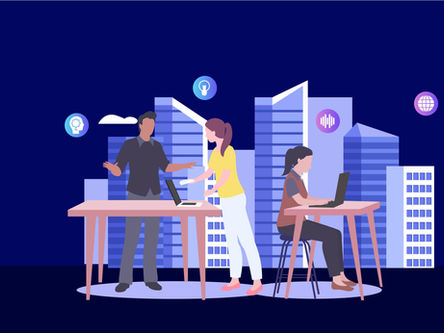
New restaurants need many things to open their doors for the first time, and a way to take orders and an option to display orders to the kitchen staff are both parts of that.
Many people will tout the benefits of a point of sale system (POS), while others will say that you need a kitchen display system (KDS). Which does your restaurant need to open successfully, and how do these systems work?
POS and KDS systems are very different from one another and perform separate functions. Here’s a closer look at these systems and how they can benefit your restaurant.
What Is a Point of Sale System (POS)?
The point of sale system is a front-of-house system your staff uses to take orders digitally. It replaces the cash register and offers a digital input system for taking customer orders. Many fast food restaurants have had POS systems for many years, but now this technology is hitting the dine-in restaurant scene. Mobile POS systems are also becoming a reality. In addition, many fast food restaurants are turning to customer-facing POS systems that allow customers to make their own orders.
Sometimes the POS system is in the form of a customer-facing kiosk on the table or in a stand-alone location in the restaurant. The customer inputs their order and pays at the station, and the restaurant gets to work making the order. Sometimes it is a touch screen tablet, like an iPad, that waitstaff takes to the table to take orders from each individual customer.
A point of sale system is different from a KDS in that it focuses on taking orders from the customer. It also receives payment.
What Are the Benefits of a POS?
Some benefits of using a restaurant POS system include:
1) Creates a More Flexible Environment
With a mobile or stand-alone POS system, your customers can enter orders and pay for their meals from anywhere in your restaurant. You can set it up on the counter, send it out with your waitstaff, or have a kiosk for customers to use. This design gives you quite a bit of flexibility in your restaurant.
2) Allows Your Restaurant To Have Better Communication
The POS system will take the order from your customer and send it to the back of house for the kitchen staff to make. Servers no longer have to deliver orders, which can take extra time and leave a chance for mistakes. Instead, the POS system sends the actual customer order to the kitchen in real-time.
3) Opens Your Restaurant to More Payment Options
Ever since the pandemic, more and more businesses are embracing digital, touchless, and card-based payment options. A POS lets you take any number of payment options that are digital in nature. This even includes digital wallets, which are becoming increasingly popular. More payment options mean more income for your restaurant.
4) Makes Inventory Management a Breeze
POS systems are more complex than cash registers. Not only do they take orders and payments, but they can also track inventory. If you have a limited amount of a particular menu item, they can alert your staff or your customers the moment you sell out. These systems can also be tied to your ordering process, triggering automatic orders when your inventory starts to get low.
5) Saves Your Restaurant Time & Resources
Better inventory management, fewer mistakes on orders, the ability to track payments, and better use of your staff all help your restaurant save time and resources, which increases your profitability.
For more information on Point of Sale (POS) Purchases, check out our complete guide here.
You can also find out more on the cost of POS systems in our guide here.
What Is a Kitchen Display System (KDS)?
A kitchen display system (KDS) is the back-of-house tool that lets your restaurant kitchen staff make and deliver the food to your customers as efficiently as possible. It replaces printed or handwritten paper tickets and uses digital screens to convey the orders to the people making them.
In a typical setup, you will have stations in the back that have their own KDS screens. When a customer orders a dish, the order goes to the screen of the station that fixes that item. The chef gets to work cooking, and the waitstaff can spot the location of the order at any point in the cooking process. When the order is ready, the cook marks it off, sends it to the waitstaff to deliver to the customer, and moves to the next order in the queue seamlessly.
A KDS system is different from a POS system because it focuses on giving the orders to the people who will cook and prepare them. It does not interact with the customer and does not handle payments in any way.
What Are the Benefits of a KDS?
Some of the reasons people add a KDS to their restaurant operations include:
1) More Efficient Time Tracking
How quickly your staff gets an order out to your customer is an important part of your customer satisfaction, especially in a fast food or quick-service restaurant. KDS systems track the amount of time it takes to fill each ticket, and you can get quite a bit of data from these systems about cook times to help you streamline operations and improve efficiency. This also means getting orders to customers more quickly, and this improves your customer service because meals get delivered hot and fresh.
2) Improved Kitchen Effectiveness
Because the KDS communicates with different stations individually, each chef can focus on just the items they make at their station. The grill orders go directly to the grilling station, while orders for the fryer go directly to the fryer station. Orders get made as quickly as possible without re-routing from one cook to the next.
3) Higher Order Accuracy
Paper tickets sometimes create errors because the waitstaff writes them down wrong or illegibly. A digital system gives each station a high level of clarity on what the customer orders. Unless someone inputs it wrong into the system, the kitchen gets the exact order in a legible manner. Higher order accuracy means improved customer satisfaction.
4) Simplified Order Fulfillment
When the back of the house and the front of the house communicate well using a KDS, orders get fulfilled more easily. For the cook, making the order is as simple as looking at a screen and ensuring what the screen displays is what ends up on the plate. Online ordering also is easier to implement with one of these systems because these orders move smoothly into the workflow, rather than serving as an interruption.
5) Less Workflow Friction Overall
Overall, this process creates less friction between your waitstaff and your kitchen staff. Customers get what they want and get it more quickly, and your overall work environment is a happier one. Online ordering becomes part of the process instead of an added hassle. Overall, you save money by cutting costs, and that benefits everyone involved in your restaurant.
POS and KDS: Working Together Is Better
Since POS and KDS systems perform opposite functions, they actually work very well together. As long as you have two systems that are compatible with one another, they can integrate. Do use caution when shopping for systems, though, to make sure they can work together.
If you already have a POS or a KDS, make sure the piece of technology you add will work with what you already have. In addition to compatibility, look for a system that has features your other system lacks so you can further streamline your operations.
Benefits of Combining a POS and KDS
When you use these two systems together in the modern restaurant, benefits include:
1) Decreases Ticket Times
The POS takes the order and delivers it directly to the KDS prep stations in real-time. This process is quick and efficient, which means customers get their food as quickly as possible.
2) Reduces Food and Paper Cost
When orders are more accurate, fewer plates get returned to the kitchen because of errors. This means less food waste. When you don’t need kitchen printers and paper ordering pads, you spend next to nothing on paper. Saving in both of these areas will improve your overall bottom line.
3) Builds a Smoother Customer Experience
Ultimately, you want your restaurant to deliver an exceptional customer service experience to every customer who walks through your doors. Integrating a POS and KDS system into your restaurant will do that. Waitstaff can give each table more personalized attention, and the kitchen staff can focus on crafting delicious food that is exactly how the customer wants it, then delivering that food quickly to the table.
Optimize Your Restaurant With INFI
Are you ready to optimize your restaurant with a POS, KDS, or both? INFI’s self-service kiosk system fits the bill well. With both front-of-house and back-of-house optimization through one system, you can save money and start enjoying these benefits. Schedule a demo of our self-service kiosk ordering system today, and see how you can revolutionize your restaurant with INFI. You can also learn more about these systems by checking out our self-service kiosk POS system checklist.
Related Posts
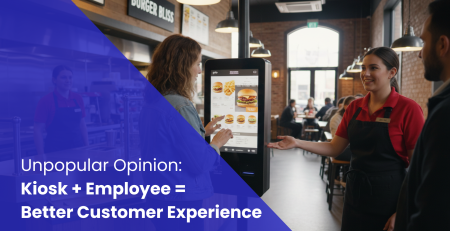
Unpopular Opinion: Kiosk + Employee = Better Customer Experience
For years, the conversation around self-service kiosks has been framed as kiosks versus employees. Either you automate and lose the...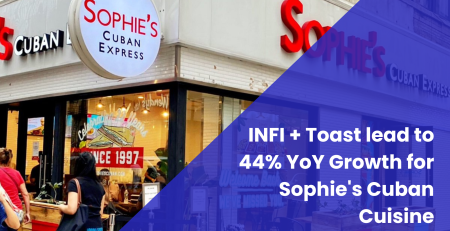
Case Study: Sophie’s Cuban Cuisine Drives Revenue Growth with Advanced Self-Order Kiosk Technology
Client: Sophie’s Cuban Cuisine Industry: Fast Casual Dining Locations: 11 Point of Sale: Toast Key Stakeholder: George J. Cestero, COO & IT/Digital Marketing Director...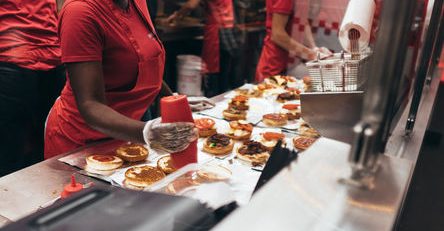
6 QSR Trends That Are Changing the Restaurant Industry
Today, QSR establishments continue to see ongoing changes in response to social and technological developments. We’ve compiled six of the...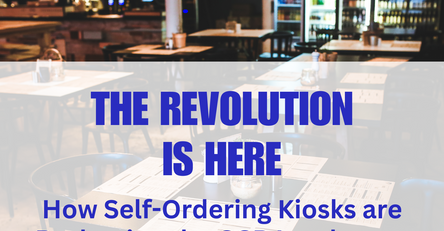
The Revolution is Here: How Self-Ordering Kiosks are Reshaping the QSR Landscape
One particular innovation has started to significantly reshape the QSR industry landscape—self-ordering kiosks.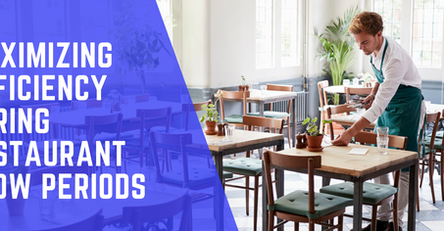
Maximizing Efficiency During Restaurant Slow Periods: A Digital Approach
This blog post explores how to navigate these slow periods effectively, focusing on digital investments and smart strategies to enhance...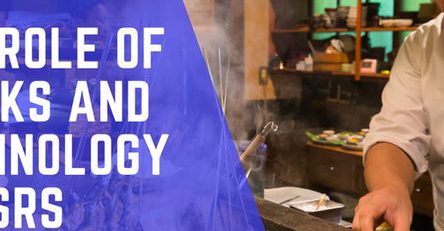
Navigating the Future of QSRs: The Role of Kiosks and Technology
We went through these articles and skimmed through the almost 500 comments to get some insight on how people are...
How to Open a Pizza Place: Step-by-Step Guide & Tips
If you’re considering starting a pizza place, follow this comprehensive guide to ensure your success.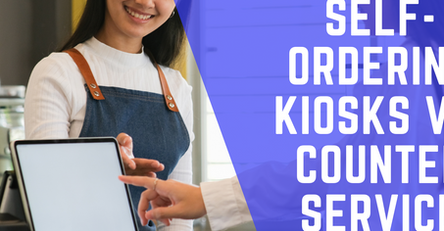
Comparing Self-Ordering Kiosks vs. Traditional Counter Service: Which Is Right for Your Restaurant?
This article delves into the pros and cons of self-ordering kiosks versus traditional counter service to help you determine which...
Top Marketing Ideas for Quick Service Restaurants (QSRs)
QSRs need to leverage creative approaches to boost brand visibility and drive sales. Here are some top marketing ideas...